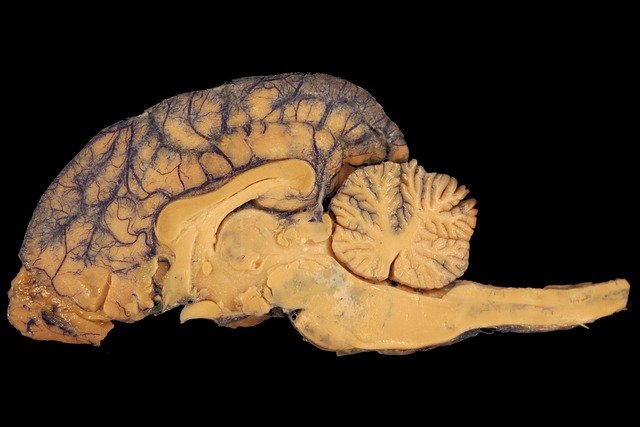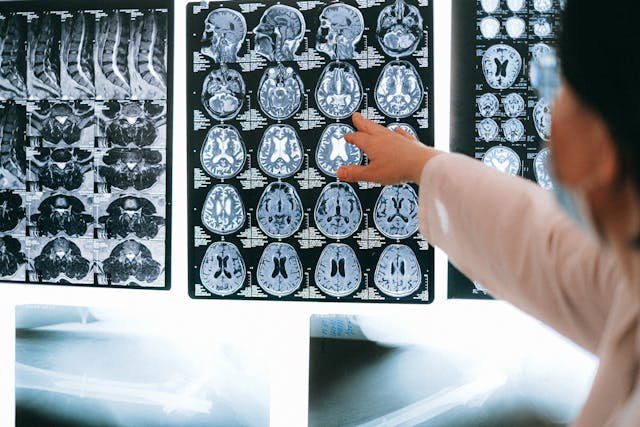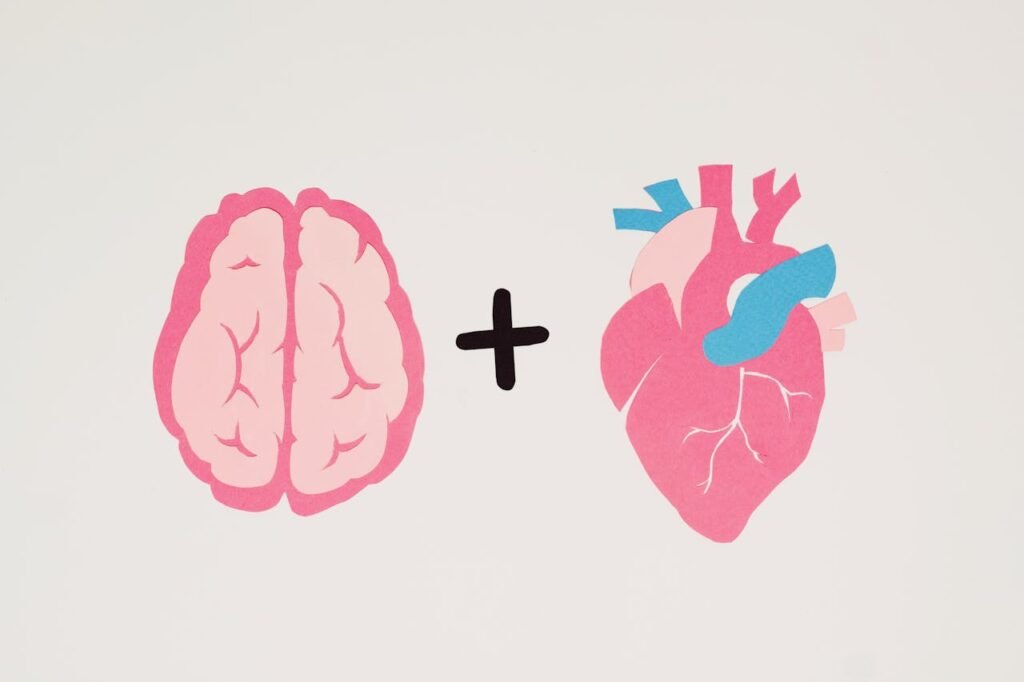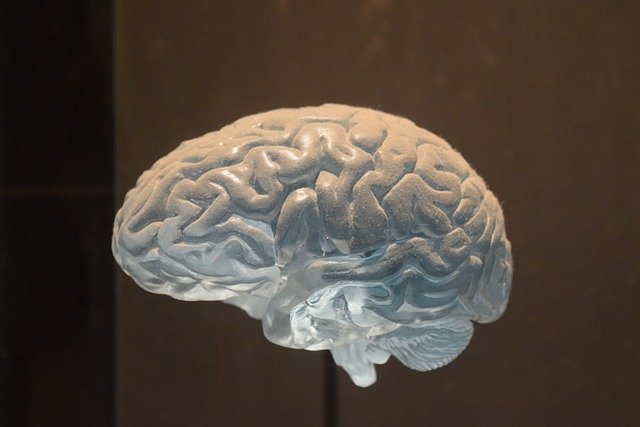Have you ever wondered how you remember your friend’s name? Or how you solve a math problem? Or why a certain smell brings back a memory from years ago?
All of that — and much, much more — happens inside one small part of your body: your brain.
Even though your brain is soft, quiet, and hidden inside your head, it’s always working. It helps you think, feel, dream, remember, and understand the world around you. In fact, everything you do — from walking and talking to laughing and learning — starts in your brain.
In this article, we’re going to explore how your brain really works. We’ll explain thinking, learning, and memory in the simplest way possible, using words and examples that make sense to every curious child.
No complicated science talk. Just clear, fun, and useful facts that help you see how smart your brain really is — and how you can take care of it and make it even stronger.
Your Brain: The Body’s Command Center
Imagine your brain as the boss of your body — the place where every choice, every feeling, every movement, and every thought begins.
Your brain doesn’t sleep, not even when you do. It works all the time — sending messages, solving problems, remembering faces, and helping your body run smoothly from head to toe.
It’s soft, squishy, and about the size of two fists held together. But inside, it’s packed with billions of tiny cells that help you think, learn, and feel.
What Is the Brain Made Of?
Inside your brain are tiny cells called neurons. These are special “talking cells” that send and receive messages. You can think of neurons as little messengers, always passing notes to each other.
Every time you blink, speak, move your hand, solve a puzzle, or even daydream — your neurons are busy sending signals to different parts of your body.
Your brain has billions of these neurons. And each one connects with thousands of others, like a giant web of wires, making sure everything happens at just the right time.
But how do these neurons talk?
They use electricity and chemicals to pass messages. These messages travel super fast, faster than a blink or a sneeze. That’s how your brain can react quickly when something surprises you or when you need to move fast.
Different Parts, Different Jobs – How the Brain Works Like a Team

Your brain is like a big company, with different departments, workers, and rooms. Each part has its own job — but no part works alone. They all help each other so your body, thoughts, and feelings stay balanced and working well.
Let’s take a slow walk through your brain and meet the main “departments” and what each one does.
🧠 1. The Cerebrum – Your Thinking and Feeling Center
The cerebrum is the largest part of your brain. It’s the part that looks like a big, wrinkly walnut sitting on top. It stretches from one ear to the other and takes up most of the space inside your skull.
The cerebrum helps you:
- Think deeply about problems and ideas
- Learn math, reading, science, and anything else at school
- Remember what you had for lunch or your best friend’s birthday
- Feel emotions like happiness, sadness, anger, or love
- Imagine things and be creative
- Make decisions like what game to play or what to eat
The cerebrum is split into two halves (called hemispheres). They’re connected and always talking to each other, but they’re also a little different:
- The left side helps with logic, language, and numbers — so it’s busy when you read, spell, or solve math problems.
- The right side helps with imagination, music, pictures, and patterns — so it’s working when you draw, dream, or recognize a face.
Even though people say “I’m left-brained” or “I’m right-brained,” the truth is, you use both sides all the time.
Each half is also divided into smaller areas called lobes:
- Frontal lobe – Helps with planning, thinking, and self-control.
- Parietal lobe – Helps you feel touch and understand space and movement.
- Temporal lobe – Helps with listening, language, and memory.
- Occipital lobe – Helps you see and understand images.
You don’t need to remember all the names — just know that each part helps your brain do something important every day.
🧠 2. The Cerebellum – The Little Coach Behind the Scenes
Right below the cerebrum, at the back of your head, is a smaller round part called the cerebellum (say: “seh-reh-BELL-um”). It may be smaller, but it’s still very powerful.
The cerebellum helps you:
- Balance when you walk, run, or stand on one foot
- Move smoothly when you throw a ball, jump, or ride a bike
- Coordinate actions like clapping, dancing, or playing a video game
It works kind of like a sports coach — always checking your moves and helping you stay balanced and in control.
Even if you’re just sitting still, your cerebellum is still working — helping you blink, shift your body, or keep your posture straight without falling over
🧠 3. The Brainstem – Your Life Manager
The brainstem is the part of your brain that connects to your spinal cord — like the handle of a lollipop. It may be small, but it controls very big things.
You don’t have to think about these things — they just happen. That’s your brainstem doing its job, like a manager working quietly behind the scenes.
It also controls:
- Coughing and sneezing
- Swallowing food and water
- Blinking
- Sleeping and waking up
Without your brainstem, your body wouldn’t know how to stay alive. That’s why even though it doesn’t help you learn math or play music, it’s one of the most important parts of all.
🧠 How It All Works Together
Now here’s what’s really amazing: all these parts — the cerebrum, cerebellum, and brainstem — are connected and constantly communicating.
- When you learn a new song, your cerebrum helps you remember it, your cerebellum helps you play the notes, and your brainstem keeps your breathing steady while you sing.
- When you trip and catch yourself, your brainstem helps you react fast, your cerebellum helps you stay upright, and your cerebrum might say, “Whoa! Be more careful.”
Your brain is not just one thing. It’s a team of powerful parts, all working together so you can move, speak, feel, dream, learn, and grow.
How Learning Works Inside the Brain

Have you ever learned something new and thought, “Wow, that was hard at first — but now I get it!” That’s not just you feeling smart. That’s your brain growing and changing.
Yes — your brain actually changes shape when you learn. It’s like your brain is building new roads and bridges every time you understand something new.
Let’s see how that works.
Learning Starts with a Connection
When you learn something new — like tying your shoes, riding a bike, or solving a math puzzle — your brain is busy making connections between neurons (those tiny brain cells we talked about earlier).
At first, the connection is weak. That’s why new things can feel hard. But every time you practice, the connection gets stronger — like a path that gets smoother the more you walk on it.
The more you repeat something, the stronger that path becomes. This is how your brain remembers and gets better at things over time.
Mistakes Help You Learn Faster
Yes, really.
When you make a mistake, your brain lights up. It says, “Hmm, that didn’t work. Let’s try again.” That’s how your brain figures things out and builds smarter connections.
So every time you mess up and try again, your brain is learning. It’s not about being perfect. It’s about growing. That’s why teachers say, “Don’t worry if you don’t get it right away.”
At Debsie, we celebrate those little moments of struggle — because that’s when the brain is doing its best work.
Practice Makes Permanent
Your brain is always watching what you repeat. If you practice spelling, your brain makes those pathways faster and stronger. If you practice piano, your brain helps your fingers move more easily.
The more you use a part of your brain, the stronger it gets — like a muscle.
And if you stop practicing for a while? That path doesn’t go away, but it might get a little rusty. That’s why review and repetition help you remember things better and longer.
Sleep Is Your Brain’s Quiet Superpower
When you sleep, your brain is still working. It’s sorting and storing everything you learned during the day.
Think of sleep as your brain’s time to organize the books on the shelf — taking today’s lessons and placing them in the right spots so you can find them later.
That’s why good sleep helps you:
- Remember what you studied
- Solve problems more easily
- Stay focused in class
So if you ever feel stuck, sometimes the best thing to do is take a break or go to sleep — your brain will keep working for you.
How Memory Works – And How to Make It Stronger

Have you ever wondered why you can still remember the words to your favorite song… but forget where you left your pencil?
That’s your memory at work.
Your brain is like a giant filing cabinet — always collecting, sorting, and storing things you see, hear, feel, and learn. But just like a messy desk, if you don’t keep things in order, it can be hard to find them again.
Let’s break down how memory really works, step by step.
Step 1: Paying Attention
The first step to remembering anything is noticing it.
When you pay attention to something — like your teacher explaining a math problem or your mom telling you where your shoes are — your brain says, “Okay, this seems important.”
If you’re not paying attention (like thinking about lunch or a funny video), your brain may skip it. That’s why focus is the first key to memory.
At Debsie, we teach kids how to gently train their focus — without pressure. We make learning fun and attention easy, so memory becomes natural.
Step 2: Making the Connection
Next, your brain tries to connect the new thing you’re learning with something it already knows.
For example:
- If you’re learning about muscles, and you remember how sore your legs felt after running, that’s a helpful connection.
- If you’re learning a new word in another language, and it sounds like a word you already know, that helps too.
The more connections your brain makes, the easier it is to remember.
That’s why teachers often use examples, pictures, stories, or games — to give your brain something familiar to hold on to.
Step 3: Storing the Memory
Once your brain decides something is worth keeping, it tries to store it — like saving a file on a computer.
There are two main types of memory:
- Short-term memory: This holds small bits of info for a short time — like remembering a phone number just long enough to dial it.
- Long-term memory: This is where your brain stores facts, skills, and experiences for the long run — like riding a bike or remembering your birthday.
To move something from short-term to long-term, you need practice, sleep, and meaning. If it’s important, useful, or emotional — your brain is more likely to keep it.
Step 4: Recalling the Memory
Later, when you need that memory, your brain goes searching for it.
This is called recall. Sometimes it’s quick and clear — like remembering your address. Other times it takes effort — like trying to remember a spelling word during a test.
But here’s the cool part: every time you recall a memory, your brain makes that path stronger. That’s why reviewing what you learn helps it stick.
Why Emotions Make Memories Stronger

Let’s play a little game:
Can you remember a time you were really, really happy? Maybe your birthday, a fun holiday, or a time you got a big hug?
Now, can you remember what you had for breakfast last Thursday?
For most people, it’s easy to remember the happy day, and hard to remember the breakfast.
Why?
Because when something makes you feel strong emotions — like joy, fear, love, or even surprise — your brain pays extra attention. It says, “This is important. Let’s not forget this.”
That’s the secret behind strong memories.
Meet the Amygdala – Your Brain’s Emotion Button
Deep inside your brain is a small part called the amygdala (say: uh-MIG-duh-luh). It’s not very big — about the size of an almond — but it plays a huge role in memory.
The amygdala’s job is to:
- Notice your feelings
- Tell your brain what matters
- Send a “save this!” signal when something big happens
So, when something makes you feel really excited or nervous or even scared, the amygdala turns on like a flashing light and tells your memory system to pay attention and lock it in.
That’s why you can remember fun or scary things so clearly — because your amygdala helped you hold on to them.
Strong Feelings = Sticky Memories
Here are a few examples:
- You might forget what chapter your teacher read last week, but remember how nervous you felt before a class presentation.
- You might forget the words of a song, but never forget how proud you felt when you sang it in front of others.
- You might forget a spelling rule, but always remember the funny story your teacher told about it.
In each case, the emotion glued the memory into your brain.
That’s why scientists — and great teachers — say:
“If it moves the heart, it sticks in the brain.”
Why This Matters for Learning
When learning feels boring or stressful, it’s hard for the brain to remember. But when learning feels fun, exciting, or meaningful, your brain says, “Let’s save this!”
That’s why at Debsie, we:
- Use fun activities that make kids laugh and wonder
- Tell stories that spark emotions
- Celebrate every success (even small ones)
- Help kids feel safe and supported when something is hard
Because the more emotion you feel while learning — the more your brain wants to remember it.
How Debsie Helps Kids Train Their Brain & Memory

Every child is born with an incredible brain — full of potential, power, and curiosity. At Debsie, we don’t just fill that brain with facts. We help children train it — to think deeply, remember clearly, and grow confidence that lasts a lifetime.
Let’s explore how Debsie turns everyday learning into real brain-building magic.
1. Turning Emotions into Learning Power
Your brain remembers what it feels. That’s why lessons that are joyful, surprising, or meaningful stick longer than ones that feel dull or stressful.
At Debsie, every class is crafted to:
- Spark excitement — through games, storytelling, and hands-on discovery.
- Build emotional connections — so learning isn’t just about “knowing,” but about feeling curious, proud, and understood.
- Celebrate small wins — because even a single “I got it!” moment gives the brain a big boost of confidence.
When learning feels good, the brain holds on tighter.
2. Helping Kids Build Memory Muscles
Memory isn’t about being “smart.” It’s about training your brain to hold onto and recall what matters.
At Debsie, we help kids:
- Practice smart review techniques — like quick flash recall, daily mini-reflections, and visual mapping.
- Use memory tools like rhymes, drawings, and word associations to lock in key ideas.
- Connect new knowledge to real-life experiences, so it feels personal, not abstract.
These methods turn short-term facts into long-term understanding.
3. Making Kids the Boss of Their Own Thinking
When kids learn passively, their brain goes quiet. But when they take charge of learning, their brain lights up.
At Debsie, we teach kids to:
- Ask big questions about what they’re learning
- Explain ideas in their own words — which strengthens their recall
- Try different strategies — so they discover how their unique brain works best
This kind of thinking builds not just memory, but mental flexibility and resilience.
4. Creating Safe Spaces for Challenge and Growth
Brains grow best in the “stretch zone” — not too easy, not too hard.
That’s why our lessons:
- Match each child’s age and skill level, while still nudging them forward
- Include encouraging feedback when mistakes happen (because errors help brains grow!)
- Build a growth mindset — where kids say, “I don’t get it yet” instead of “I can’t.”
Confidence doesn’t come from always being right. It comes from believing you can figure things out — and that’s what we teach at Debsie.
5. Building Brain-Healthy Habits for Life
Learning doesn’t stop when class ends — and neither does the brain.
That’s why Debsie helps kids build habits that keep their brain strong, like:
- Getting enough sleep, so their brain can store new memories
- Staying active and playful, because movement helps thinking
- Taking brain breaks during study time — to reset, recharge, and come back sharper
- Eating brain-friendly foods that support focus and energy
We teach not just content, but how to care for the brain that holds it all.
Real Learning, Real Confidence
When a child understands how their brain works, everything changes. They realize that learning isn’t magic — it’s a skill they can practice, shape, and master.
That’s the Debsie difference.
We give children the tools to:
- Think better
- Remember smarter
- Believe in themselves
Because when kids know how to train their brain, they can learn anything — in school, in life, and far beyond.
Final Thoughts: Your Brain Is a Superpower
Inside your head is something more powerful than any computer, faster than any rocket, and more amazing than any machine — your brain.
It helps you think, feel, solve problems, remember moments, and imagine things that don’t exist yet. And here’s the most exciting part: your brain gets stronger every time you use it.
Whether you’re learning a new word, solving a tricky puzzle, remembering something cool from class, or simply wondering “why” — your brain is growing.
And that’s what we’re all about at Debsie.
We don’t just teach facts about how the brain works. We help kids use their own brain in smarter, braver, and more creative ways. Our expert teachers create a space where children feel safe, curious, and proud of their thinking — no matter their starting point.
We believe every child should feel confident about learning — and we know that when they understand how their brain works, they feel unstoppable.
🧠 Let your child explore the power of their own mind.
👉 Book a free trial class with Debsie today.
Read Next:
